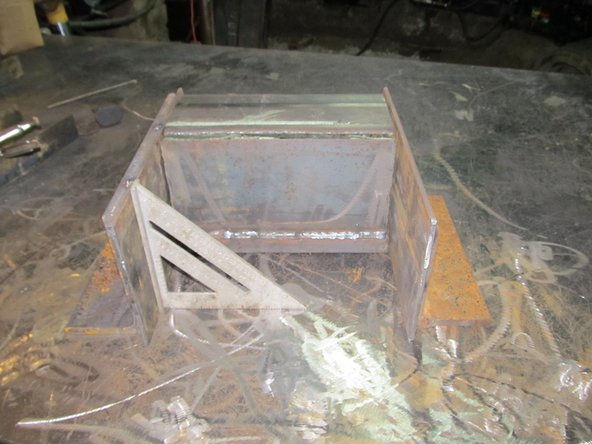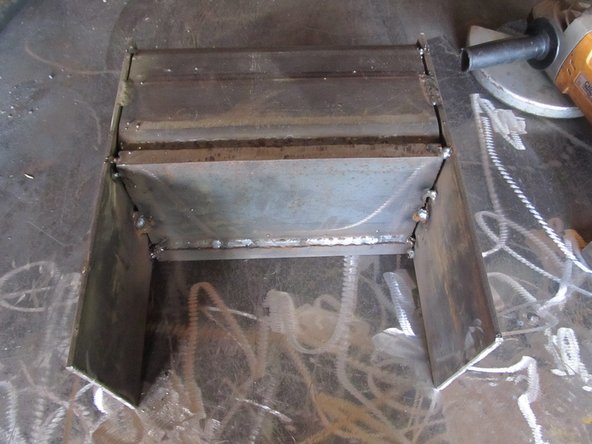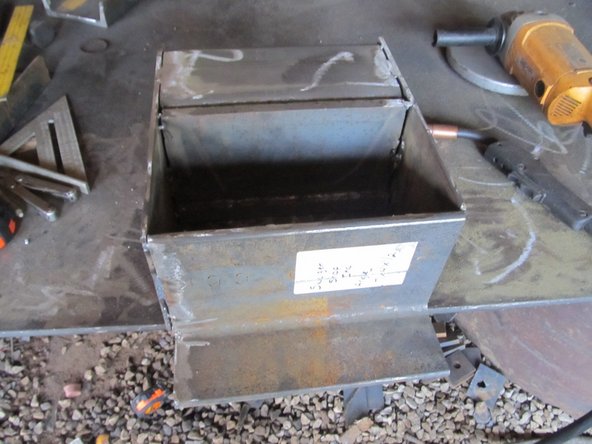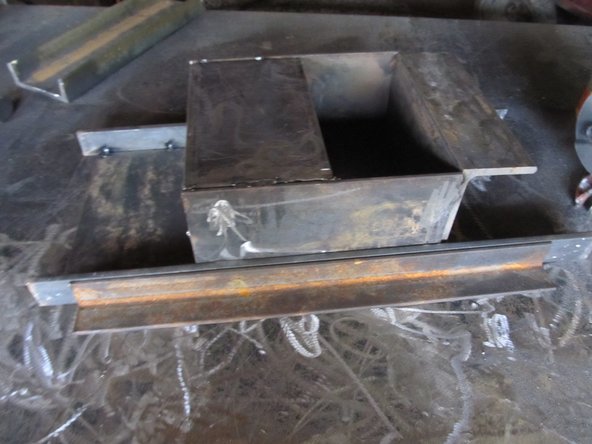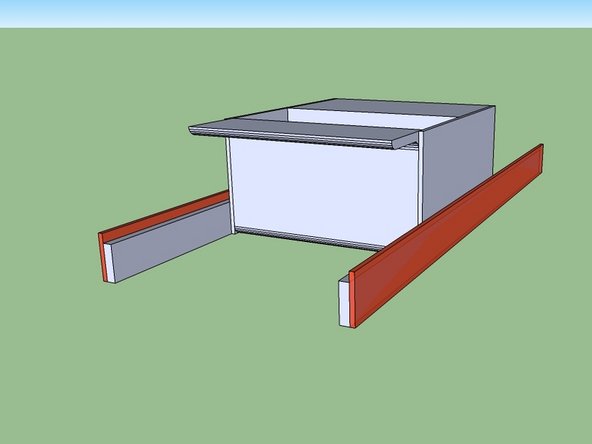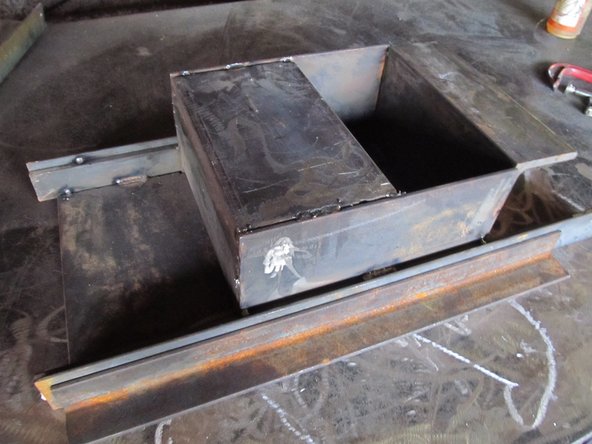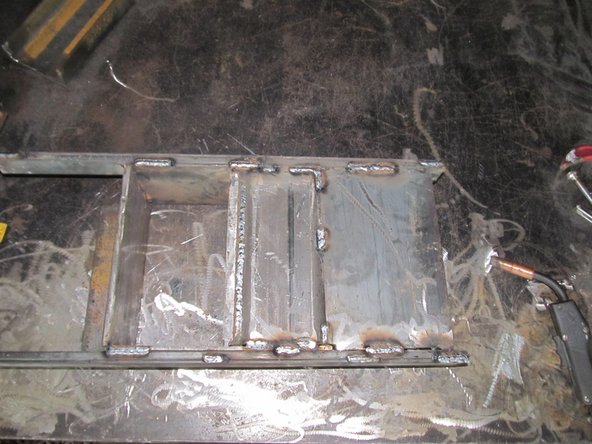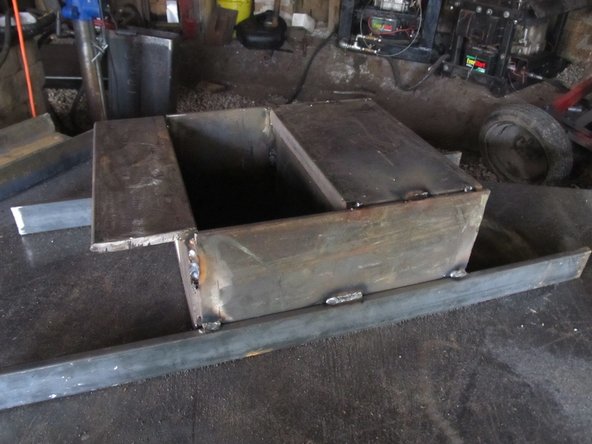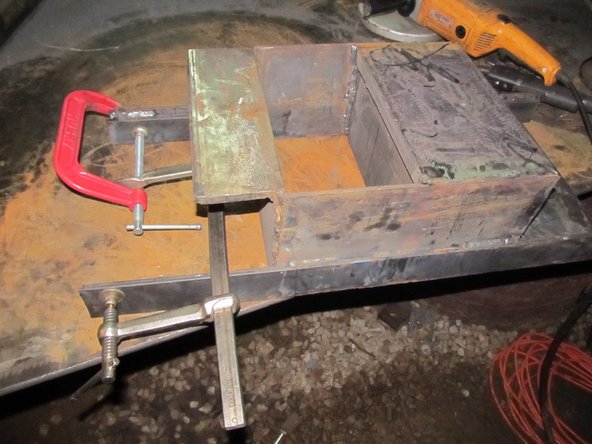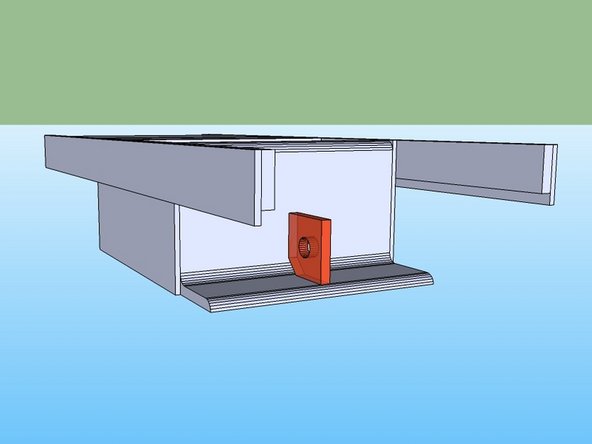Introduction
Tools
Parts
No parts specified.
-
-
Lay the spacer tube on top of the press plate, align the sides and make the back edge flush.
-
Insure all edges are tight and squared; this piece is critical, it must be a uniform height throughout the entire item. Grind off any imperfections.
-
Tack weld the two together in many places (at least 3 on each seam).
-
Double check everything for squareness!!
-
Weld the two together on all edges where they touch
-
It is a good idea to weld in 1” or 2” increments, skipping around to different places to prevent warpage. You will need to weld multiple layers where the tubing is rounded.
-
-
-
Place the vertical support and tack it in multiple places
-
Weld the vertical support to the press plate and spacer tube assembly.
-
Grind down the welds on the open end of the tube so they are flush with the rest of the tube
-
-
-
Lay the spacer/press plate assembly down so the press plate is touching the table.
-
Align side pieces with spacer and press plate assembly.
-
Insure the two are square vertically and horizontally with the spacer, that they are parallel, and that everything is touching the table.
-
It helps to use angle iron tacked to your table and the sides, so it insures they are vertically square. This also makes it a bit easier to align everything else. Video Help
-
Also, it may help to use paper shims (see between the sides and the tube to properly space them. Video Help
-
Tack the sides to the tube on all sides in multiple places except where it is touching the table. Add a few 1" seams to prohibit them from moving.
-
Do a few light tacks first, and double check it's still square. If not, grind off the tacks and start over.
-
-
-
Grind off the welds for the back and side pieces so that the entire drawer is flush.
-
Flip the drawer over and tack the sides from the top.
-
Place the roof and inner rails in their respective places. See Diagram.
-
Insure inner rails are perfectly parallel (varying no more than a 16th of an inch) and square throughout the entire length.
-
Tack them in multiple places except where they are touching the table.
-
-
-
Insure they are perfectly parallel; otherwise they will leave the roller guides. Insure they vary no more than 1/16" over the entire length.
-
Hint: Use paper shims for this
-
-
-
All the seams should be completely welded except the difficult to reach places between the inner and outer rails, those can be welded about 50%.
-
Weld short lengths at a time and jump around a lot to minimize warping.
-
You may want to grind off the welds in between passes around the drawer to allow it to cool.
-
-
-
There cannot be any outstanding bumps or welds anywhere; the drawer will be sliding in and out of a tight spot and bumps will catch on the frame crossmembers.
-
Make sure there's no welding spatter where the rollers will be rolling. Grind any off with a small grinder
-
-
-
The rails likely got warped outwards on the side with the back while you were welding.
-
If they are not still parallel, you will need to pinch them inwards so that they are. You can do so using two C-Clamps.
-
-
-
Prepare as shown in the diagram
-
Weld it to the back of the drawer, insuring it is square and centered
-







